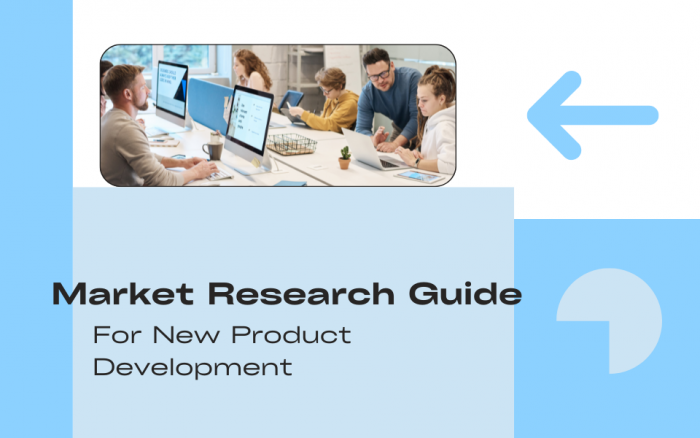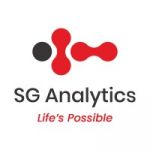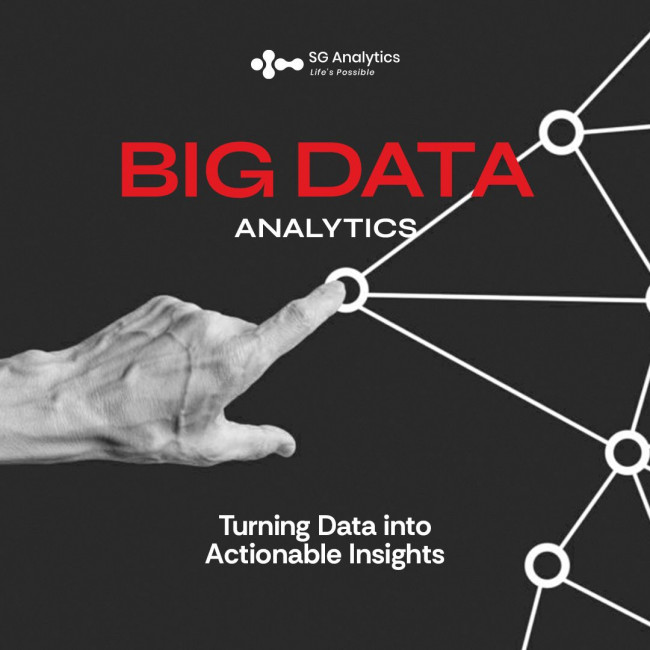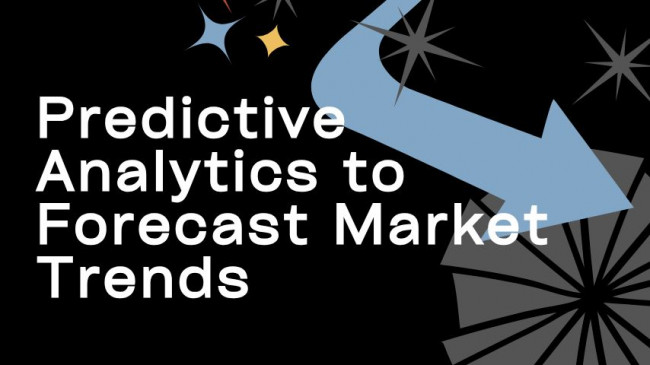Market research is an integral part of customer behavior and experience personalization strategies. It provides necessary insights into consumers' product preferences and market trends. Conventional techniques such as one-to-one surveys, focus groups, or secondary data collection have been standard in this field. However, technological enhancements have equipped modern market researchers with novel tools like virtual reality. This post will discuss the future of market research, including the potential of virtual reality and immersive experiences.

What is Virtual Reality?
Virtual reality (VR) simulates a computer-aided audiovisual environment. It can mimic reality or include experiences from a fantasy. Its adequate implementation will resolve many customer profiling issues and data quality limitations haunting professionals in market research consulting. Moreover, immersing users in a realistic simulation allows VR projects to provide more dynamic or nuanced insights into consumer behavior.
What Are the Benefits of Virtual Reality in Market Research?
1| Immersive Experience and Consumer Behavior
One of VR's key advantages in market research is the ease of creating highly immersive experiences. Unlike traditional methods, VR can simulate a complete environment. That allows researchers to observe how consumers interact with products or services in a lifelike context. Besides, this immersion can lead to more accurate and authentic responses. After all, participants are less likely to be influenced by the artificiality of a traditional research setting. The required detailed, realistic simulation is often complex to accomplish with ordinary methods.
2| Emotional and Behavioral Insights
Another significant benefit of VR integration is its ability to interpret emotional responses. However, you require biometric sensors to track heart rate and eye movements. The acquired data will assist in measuring physiological responses to different stimuli within the virtual environment. This data on reactions can facilitate valuable insights into how consumers feel about a product. You can also check their positive or negative sentiments toward an advertisement or brand.
How to Utilize VR in Market Research Based on Your Target Industry?
According to market intelligence consulting experts, several industries already leverage VR for customer insights. The following use cases demonstrate the versatility and effectiveness of this technology.
1| Retail and Consumer Goods
Virtual reality software can help retailers try multiple store layouts to see how customer dwell time changes. Remember, product placements and marketing tactics affect how much customers buy before the final checkout. Therefore, companies like Walmart and IKEA have experimented with virtual stores. They also intend to gather consumer feedback before making costly and permanent changes to their physical store layouts in the real world. This precaution allows them to optimize their strategies based on data-driven insights rather than intuition or guesswork.
2| Automotive Industry
Automotive companies utilize VR systems to offer virtual car showrooms and deliver simulated test-driving experiences. This use case enhances the customer experience. Brands get this valuable data to investigate ever-changing consumer preferences and purchasing behaviors. Consider Audi and Ford. They have developed virtual test drives, allowing potential buyers to experience their vehicles. They can configure various scenarios for virtual driving sessions. Later, they might gather stakeholder feedback influencing future car designs, collision safety measures, handling methods, or fuel-efficiency parameters.
3| Healthcare and Pharmaceuticals
In healthcare, clinicians and universities will leverage VR to simulate medical environments for apprentices' training and evaluating new medical devices and treatments. Pharmaceutical companies employ VR to simulate clinical trials. Doing so allows medical professionals to examine patient reactions to new drugs. Although these trials are programmatic, they enable better forecasts for real-world healthcare outcomes. As a result, the stakeholders can accelerate research and enhance the accuracy of their findings.
Challenges in VR Integration for Immersive Experiences and Market Research
While VR's potential in market research is immense, several challenges and considerations might hinder the effective implementation of virtual reality experiences.
1| Accessibility and Cost
One of the top challenges to the widespread integration of VR is the cost of equipment and the availability of reliable talent. Business leaders need cost-effective tools and experienced VR-friendly market researchers to develop and maintain virtual environments. High-quality VR headsets and sensors can be expensive, and creating a realistic and engaging virtual environment requires significant software development and design investment. As the virtual reality industry matures and its tech tools become more affordable, these costs will likely decrease. So, VR integration for market studies will be more accessible to all organizations worldwide.
2| Data Privacy and Ethics
Corporations' use of VR in market research and hyper-personalization raises critical questions about data privacy and ethics. Biometric data, such as heart rate and eye movement, are highly sensitive data categories. Therefore, data processing entities must handle them with care. Companies must ensure that their data protection measures are effective. At the same time, participants must know how data recipients will utilize their data legally, ethically, and legitimately. Transparency and consent are crucial to maintaining trust and avoiding potential legal issues.
3| Technical Limitations
Despite significant advancements, VR technology still has limitations. Motion sickness, for example, can affect some users by limiting the duration of VR sessions. Additionally, the realism of virtual environments exhibits visual artifacts or rendering glitches because of current hardware and software limitations. As technology continues to improve, these obstacles will likely diminish. However, they might be a significant problem for enterprises with smaller budgets.
The Future of Virtual Reality in Market Research
The future of VR and immersive experiences in market research is promising, with several disruptive projects already making the headlines, as explored below.
1| Enhanced Realism and Interactivity
Continuous progress in AI technologies promises better realism and more engaging interactions. Advances in graphics, haptic feedback, and artificial intelligence will create more lifelike and engaging virtual environments. Their future releases will enhance the accuracy of consumer behavior studies and provide deeper insights into their preferences and motivations.
2| Integration with Other Technologies
Integrating VR with other emerging technologies will open up new possibilities for market research. Consider augmented reality (AR), artificial intelligence (AI), and live data streaming projects. For example, brands can use AI platforms to analyze the extensive databases from VR-powered market studies to identify unique patterns and crucial trends that may be undetectable in a standard analysis. AR can complement VR by overlaying digital information in the real world, creating a seamless blend of physical and virtual experiences.
3| Broader Adoption Across Industries
Affordable technologies indicate broader VR adoption in market research across various industries. The potential applications will benefit entertainment, tourism, education, and real estate. Companies that embrace VR early on will have a first-mover advantage because they will gain actionable insights into their customers before competitors. Consequently, they will successfully stay ahead of them in understanding market trends.
4| Personalized Consumer Experiences
VR will revolutionize market research and provide better approaches to studying consumer engagement metrics. Understandably, you want to personalize virtual experiences based on individual preferences and behaviors. This method helps create more meaningful and engaging interactions. For instance, a fashion retailer could offer virtual fitting rooms. Online customers would try on clothes and receive personalized recommendations based on submitted style and body type data. Similar customization options tell customers your business is committed to prioritizing satisfaction and brand loyalty.
Conclusion
Global brands want to incorporate virtual reality and immersive experiences into market research. These tech advancements help redefine the methods for understanding consumer behavior. VR addresses many of the limitations of traditional research methods by providing a more realistic, engaging, and data-rich environment. While challenges can be tricky to overcome, the strategic benefits attract brands. For deeper insights and more accurate data to inform business strategies, companies have invested in developing solutions to those problems.
As technology advances, domain experts expect VR to become indispensable in the market research toolkit. Companies that invest in this technology earlier will be well-positioned to reap the rewards since they acquire a competitive edge essential to thrive in their industry. The future of market research is immersive, and your competitors have merely begun exploring the possibilities.















